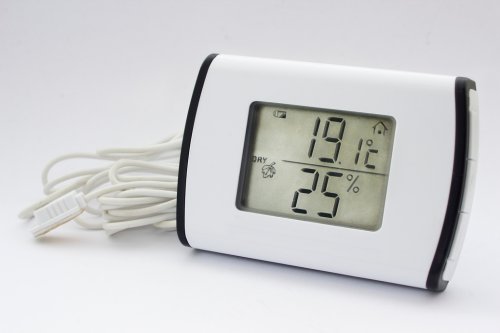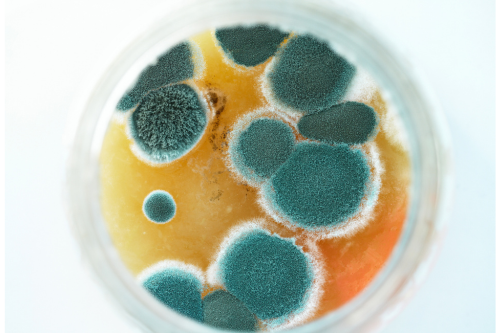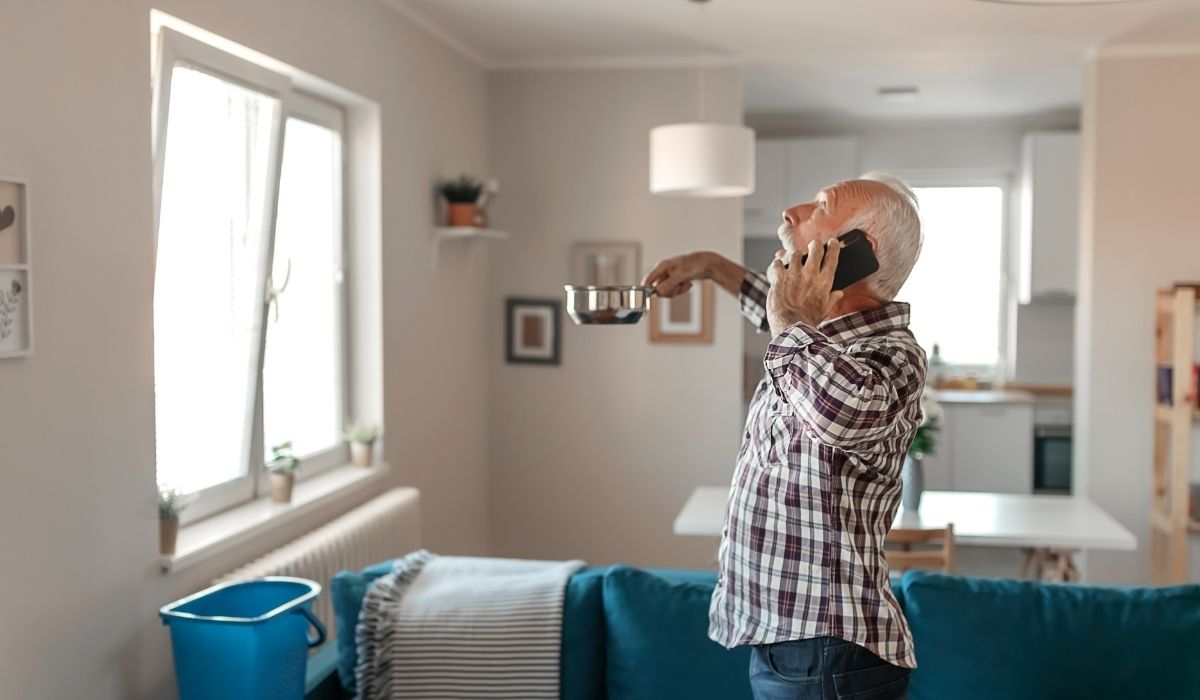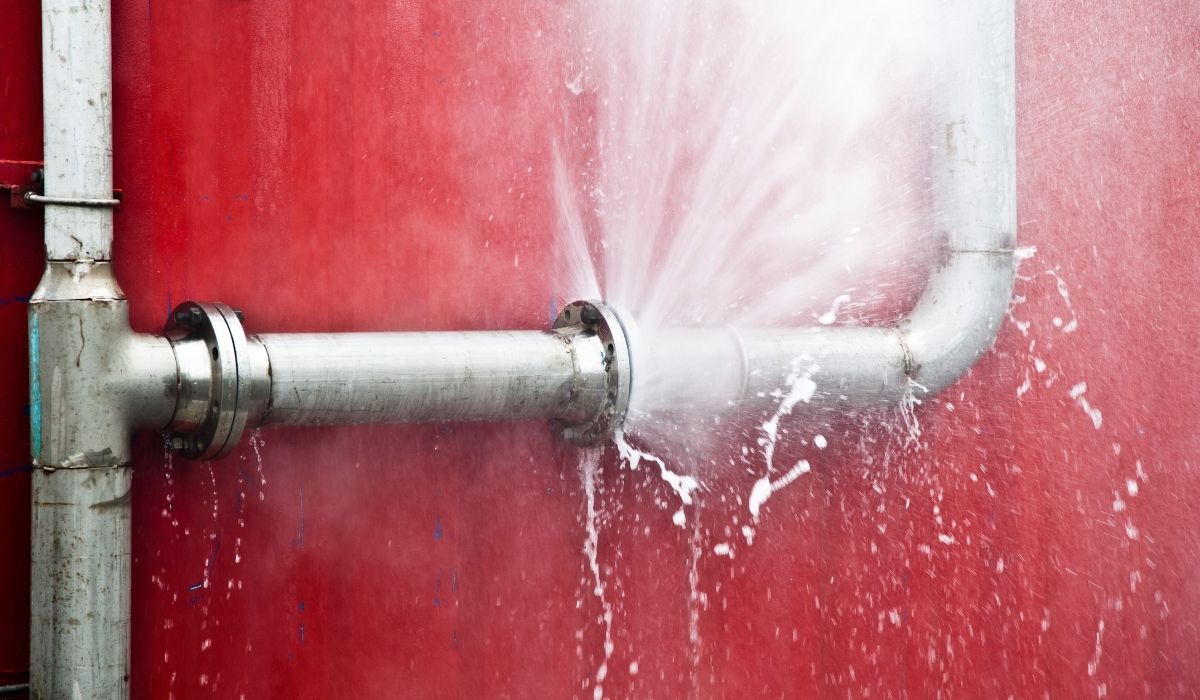How to Detect Mold in Your Home in 5 Simple Steps

- November 18, 2024

Eric Allison
Eric Allison is a seasoned professional in property restoration, serving as the primary contact and founder of Preferred Restoration Services, LLC, based in Tustin, California. With a career spanning over two decades, Eric has developed extensive expertise in addressing fire, water, and mold damage, ensuring properties are restored to their pre-loss condition.
Table of Contents
EXCELLENTVerified A straight up honest broker who knows his stuff. Excellent communication and very helpful problem solving our mold issuePosted onVerified Giving Eric a 5-star review, and we haven't even started any work yet. He came to gave us his professional opinion and quote to address a mold issue in our house. He is clearly very knowledgeable. His opinion was wildly different than the previous estimate we received, from an agency that wanted to charge us about 4 times as much. He did a much more thorough assessment, and explained his reasoning for why he felt that our issue wasn't as extreme as the previous agency. He even gave us some suggestions as to how we could address our issue on our own, if need be. He doesn't appear "out to get you"... there are a lot of companies that work off the "mold is gold" motto, but he doesn't seem to be one of them. If we end up going with him for the job, we'll update the review... but, I was just so happy and relieved with his approach, estimate, knowledge, and his overall professionalism. Glad there are still people like this out there!Posted onVerified Eric and his team were prompt and professional. From diagnosis through cleanup they were very thorough.Posted onVerified Above and beyond expectations. Eric and his team were not only helpful, kind, and relatable to our issues, they were extremely professional and reliable. Always answered our calls. Showed up on time with great attitudes. Respected our home. Most importantly, got the job done in a fast and timely manner. Can't recommend enough.Posted onVerified We had a leak under the kitchen sink and called another company first. We were told there is mold and they would have to tent the area to remove it and that we'd also need a whole new cabinet. Of course, it was pretty expensive and they said we couldn't use the kitchen for a couple weeks. Feeling it's always wise to get more than one estimate, I called Preferred Restoration as they had excellent reviews. Eric replied promptly and came out to look things over. He felt the mold wasn't bad enough to require a tent and also felt a whole new cabinet was not required. Needless to say, we accepted his estimate immediately and the work was done in a professional manner. (They don't do the carpentry work, but can make a recommendation.) I highly recommend Preferred Restoration. I believe it's an honest company with skilled professionals.Posted onVerified Eric the owner was great to work and keep me informed the entire time that the moisture was being removed from my home. Highly recommend Eric and his team for any job!Posted onVerified Right from the start I knew I was going to be in good hands with this company. The response time was super quick and getting Eric to come out to my home to assess the situation was quicker than expected. Eric was very knowledgeable and answered all my questions thoroughly. He took his time to listen to all my concerns to carefully address the issues in my home. He made a stressful situation feel less stressful and manageable. I definitely recommend this company and will contact Eric if needed in the future. Thanks again Eric!Posted onVerified We discovered a mold issue in one of our bedrooms and reached out to Preferred Restoration Services for guidance. Eric was extremely helpful in helping us navigate what needed to be done since we had no experience with this type of issue. He shepherded us through the process and helped us understand every step that needed to be performed. He referred us to a couple of contractors which we used for plumbing and testing and they were also excellent. This was helpful so that we didn't have to figure out who else we needed to work with and vet them as well. Everyone from Preferred Restoration Services was very professional, communication was excellent, and customer service was outstanding. We had a lot of questions and they were all answered very quickly. I highly recommend Preferred Restoration Services for any damage restoration needs.Posted onVerified Preferred Restoration is the best service in town! If you want quality, fair pricing & guidance, call Preferred Restoration! Ask for Eric, he is very helpful and quick.Posted onVerified We had an issue with a sewer line that leaked and potentially needed some soil remediation under the house. I gave Eric a call and made an appointment for the next day for him to come out and assess the situation. Throughout the process his communication was great and he was on time (even gave me a call to let me know he was on his way). He went above an beyond to even check inside the house for potential water damage/mold. We did not have to move forward with any remediation. I appreciate Eric's communication, thoroughness, and HONESTY. We will keep his contact if we need any work in the future. I highly recommend Eric and Preferred Restoration!
How to Detect Mold in Your Home in 5 Steps
Learn how to detect mold in your home utilizing these 5 steps: Recognize the signs, inspect high-risk areas, conduct testing, address the problem, prevent future growth. Mold in your house can lead to serious health risks and costly structural repairs. Mold spores spread quickly and can thrive in hidden areas, causing problems before you even notice them. This guide will explain how to detect mold in your home in five actionable steps, ensuring you address mold problems before they worsen.
Step 1: Recognize the Signs of Mold Present
Detecting mold starts with identifying its early signs. Learning to spot these indicators is crucial in addressing potential issues before they escalate.
1. Musty Odor
A persistent musty odor is a classic sign of mold growth. This earthy smell is often more pronounced in areas like basements, bathrooms, and attics. While the odor alone doesn’t confirm the presence of mold, it is often an indicator of hidden mold growth in damp or poorly ventilated areas.
2. Visible Mold
Visible mold growth is the most obvious sign. It may appear as discoloration or patches on walls, ceilings, floors, or even furniture. Mold often presents as black, green, or white spots but can take other forms. Finding visible mold requires immediate attention, as it typically signifies an underlying moisture problem.

3. Health Symptoms
Mold exposure can cause various health issues, including respiratory problems, skin irritation, and allergic reactions. Symptoms like sneezing, coughing, itchy eyes, or worsening asthma may indicate that mold spores are present in the air. Pay attention to symptoms that improve when you leave the house, as they could signal indoor mold exposure.
4. Water Damage
Water damage is a leading cause of mold problems. Look for signs of past leaks or flooding, such as water stains, warped floors, or peeling paint. Mold thrives in damp environments, so areas with unresolved water damage are particularly vulnerable.

5. Excess Humidity
Excess humidity can create the perfect environment for mold growth. Use a hygrometer to measure humidity levels in your home, and aim to keep them below 50%.

Step 2: Inspect High-Risk Areas for Mold
Certain areas in your home are more likely to harbor mold due to their moisture levels and lack of ventilation. Conduct a thorough inspection of these areas to find visible mold growth.
1. Bathrooms
Bathrooms are prime locations for mold growth due to constant moisture. Check around sinks, bathtubs, showers, and under bathroom rugs for visible mold. Don’t forget to inspect tile grout and the area behind toilets.

2. Kitchens
The kitchen is another high-risk area. Look for mold under sinks, behind refrigerators, and around dishwashers where water leaks might occur. Mold growth can also develop in the corners of cabinets or behind backsplashes.

3. Basements and Crawl Spaces
Basements and crawl spaces are often damp and poorly ventilated, making them a breeding ground for mold spores. Check walls, floors, and stored items for visible mold or water damage. Hidden mold inside walls or behind insulation is also common in these spaces.
4. HVAC Systems
Your heating and cooling system can circulate airborne mold spores throughout your home. Inspect vents, ducts, and filters regularly for signs of mold growth.
5. Attics
Poor ventilation and roof leaks can lead to mold problems in attics. Look for discoloration or visible mold growth on wooden beams, insulation, and stored items. Roof leaks can cause hidden mold inside walls and ceilings below the attic.
Step 3: Test For Mold
If you suspect mold but cannot locate it, testing is essential to confirm its presence and extent. Testing can also identify the type of mold spores in your home, which may be helpful for effective mold remediation.
1. DIY Mold Testing Kits
Homeowners can purchase mold testing kits from hardware stores. These kits allow you to collect samples from surfaces or air and send them to a lab for analysis. While cost-effective, DIY kits may not provide the comprehensive results needed to address hidden mold.

EXCELLENTVerified A straight up honest broker who knows his stuff. Excellent communication and very helpful problem solving our mold issuePosted onVerified Giving Eric a 5-star review, and we haven't even started any work yet. He came to gave us his professional opinion and quote to address a mold issue in our house. He is clearly very knowledgeable. His opinion was wildly different than the previous estimate we received, from an agency that wanted to charge us about 4 times as much. He did a much more thorough assessment, and explained his reasoning for why he felt that our issue wasn't as extreme as the previous agency. He even gave us some suggestions as to how we could address our issue on our own, if need be. He doesn't appear "out to get you"... there are a lot of companies that work off the "mold is gold" motto, but he doesn't seem to be one of them. If we end up going with him for the job, we'll update the review... but, I was just so happy and relieved with his approach, estimate, knowledge, and his overall professionalism. Glad there are still people like this out there!Posted onVerified Eric and his team were prompt and professional. From diagnosis through cleanup they were very thorough.Posted onVerified Above and beyond expectations. Eric and his team were not only helpful, kind, and relatable to our issues, they were extremely professional and reliable. Always answered our calls. Showed up on time with great attitudes. Respected our home. Most importantly, got the job done in a fast and timely manner. Can't recommend enough.Posted onVerified We had a leak under the kitchen sink and called another company first. We were told there is mold and they would have to tent the area to remove it and that we'd also need a whole new cabinet. Of course, it was pretty expensive and they said we couldn't use the kitchen for a couple weeks. Feeling it's always wise to get more than one estimate, I called Preferred Restoration as they had excellent reviews. Eric replied promptly and came out to look things over. He felt the mold wasn't bad enough to require a tent and also felt a whole new cabinet was not required. Needless to say, we accepted his estimate immediately and the work was done in a professional manner. (They don't do the carpentry work, but can make a recommendation.) I highly recommend Preferred Restoration. I believe it's an honest company with skilled professionals.Posted onVerified Eric the owner was great to work and keep me informed the entire time that the moisture was being removed from my home. Highly recommend Eric and his team for any job!Posted onVerified Right from the start I knew I was going to be in good hands with this company. The response time was super quick and getting Eric to come out to my home to assess the situation was quicker than expected. Eric was very knowledgeable and answered all my questions thoroughly. He took his time to listen to all my concerns to carefully address the issues in my home. He made a stressful situation feel less stressful and manageable. I definitely recommend this company and will contact Eric if needed in the future. Thanks again Eric!Posted onVerified We discovered a mold issue in one of our bedrooms and reached out to Preferred Restoration Services for guidance. Eric was extremely helpful in helping us navigate what needed to be done since we had no experience with this type of issue. He shepherded us through the process and helped us understand every step that needed to be performed. He referred us to a couple of contractors which we used for plumbing and testing and they were also excellent. This was helpful so that we didn't have to figure out who else we needed to work with and vet them as well. Everyone from Preferred Restoration Services was very professional, communication was excellent, and customer service was outstanding. We had a lot of questions and they were all answered very quickly. I highly recommend Preferred Restoration Services for any damage restoration needs.Posted onVerified Preferred Restoration is the best service in town! If you want quality, fair pricing & guidance, call Preferred Restoration! Ask for Eric, he is very helpful and quick.Posted onVerified We had an issue with a sewer line that leaked and potentially needed some soil remediation under the house. I gave Eric a call and made an appointment for the next day for him to come out and assess the situation. Throughout the process his communication was great and he was on time (even gave me a call to let me know he was on his way). He went above an beyond to even check inside the house for potential water damage/mold. We did not have to move forward with any remediation. I appreciate Eric's communication, thoroughness, and HONESTY. We will keep his contact if we need any work in the future. I highly recommend Eric and Preferred Restoration!
2. Professional Mold Testing
Professional mold testing is more thorough and reliable. A professional mold inspector uses specialized tools to detect hidden mold growth and assess the concentration of mold spores in your home. Their expertise ensures a complete understanding of the mold problem.
3. Air Quality Testing
Airborne mold spores can significantly increase the chance of indoor air quality problems. Air quality tests measure the concentration of mold spores in the air, even in areas where visible mold isn’t present. This is especially helpful for detecting hidden mold growth.

Step 4: Address the Mold Problem
Once you confirm mold is present, take immediate action to remove mold and address the root cause. Mold problems will worsen if left untreated.
1. Small-Scale Mold Removal
For small areas of visible mold, you can handle the cleanup yourself. Use a mixture of water and detergent to scrub away mold. However, avoid using bleach on porous materials like drywall, as it may not effectively remove mold from these surfaces. Wear gloves and a mask to avoid mold exposure during cleanup.
2. Professional Mold Remediation
If the mold problem is extensive or involves hidden mold, contact a professional mold remediation company. Professionals have the tools and expertise to safely remove mold and prevent its recurrence. They also address dangerous mold-based chemicals that may harm your health.

3. Replace Mold-Damaged Materials
Porous materials like carpets, drywall, and insulation often cannot be salvaged if mold has infiltrated them. Removing and replacing these materials ensures that hidden mold inside them doesn’t continue to spread.
Step 5: Prevent Mold Growth in the Future
After removing mold, focus on preventing mold growth to maintain a healthy home environment.
1. Control Humidity
Humidity control is the most effective way to prevent mold. Use a dehumidifier in damp areas, such as basements, and ensure proper ventilation in bathrooms and kitchens. Check humidity levels regularly and keep them below 50%.
2. Fix Water Leaks
Water leaks are a primary cause of mold in your house. Repair leaks in roofs, walls, and plumbing promptly. Inspect your home after heavy rainfall to catch leaks early.

3. Dry Wet Areas Quickly
Mold can begin growing within 24-48 hours on wet surfaces. Promptly dry areas affected by spills, leaks, or flooding to prevent mold from taking hold.
4. Clean Regularly
Regular cleaning helps prevent mold growth on surfaces. Focus on areas prone to moisture, such as tile grout, shower curtains, and window sills.

5. Monitor Ventilation
Ensure your home has adequate ventilation to prevent moisture buildup. Use exhaust fans in kitchens and bathrooms, and open windows to improve airflow whenever possible.
6. Inspect Your Home Regularly
Conduct regular mold inspections to identify potential issues before they become significant. A professional mold inspector can help detect hidden mold inside walls or beneath floors, ensuring early intervention.
The Importance of Acting Quickly
Mold is more than an inconvenience; it poses real risks to your health and property. Prolonged exposure to toxic mold can cause severe health problems, including respiratory issues and chronic illnesses. Mold also weakens building materials, potentially leading to costly repairs. Acting quickly to detect mold and address the problem minimizes these risks.
Conclusion
Detecting mold in your house requires awareness, regular inspection, and proactive measures. By recognizing the signs, inspecting high-risk areas, conducting mold testing, and taking immediate action, you can protect your home and health. Preventing mold growth through proper maintenance and humidity control ensures a safe and comfortable living environment for your family.
This expanded guide provides a detailed approach to identifying and addressing mold, combining actionable steps with essential prevention strategies. Let me know if further adjustments are needed!
FAQs
1. How can I tell if mold is hidden?
Hidden mold often reveals itself through a musty odor, health symptoms, or signs of water damage. Professional mold testing is the best way to detect hidden mold growth.
2. Can I clean mold myself?
You can remove small patches of visible mold using water and detergent. However, extensive mold growth or hidden mold requires professional mold remediation to ensure thorough removal and safety.
3. Is all mold dangerous?
Not all mold is toxic, but any mold growth should be addressed promptly. Even non-toxic mold can cause health issues and damage to your home.
Table of Contents
EXCELLENTVerified A straight up honest broker who knows his stuff. Excellent communication and very helpful problem solving our mold issuePosted onVerified Giving Eric a 5-star review, and we haven't even started any work yet. He came to gave us his professional opinion and quote to address a mold issue in our house. He is clearly very knowledgeable. His opinion was wildly different than the previous estimate we received, from an agency that wanted to charge us about 4 times as much. He did a much more thorough assessment, and explained his reasoning for why he felt that our issue wasn't as extreme as the previous agency. He even gave us some suggestions as to how we could address our issue on our own, if need be. He doesn't appear "out to get you"... there are a lot of companies that work off the "mold is gold" motto, but he doesn't seem to be one of them. If we end up going with him for the job, we'll update the review... but, I was just so happy and relieved with his approach, estimate, knowledge, and his overall professionalism. Glad there are still people like this out there!Posted onVerified Eric and his team were prompt and professional. From diagnosis through cleanup they were very thorough.Posted onVerified Above and beyond expectations. Eric and his team were not only helpful, kind, and relatable to our issues, they were extremely professional and reliable. Always answered our calls. Showed up on time with great attitudes. Respected our home. Most importantly, got the job done in a fast and timely manner. Can't recommend enough.Posted onVerified We had a leak under the kitchen sink and called another company first. We were told there is mold and they would have to tent the area to remove it and that we'd also need a whole new cabinet. Of course, it was pretty expensive and they said we couldn't use the kitchen for a couple weeks. Feeling it's always wise to get more than one estimate, I called Preferred Restoration as they had excellent reviews. Eric replied promptly and came out to look things over. He felt the mold wasn't bad enough to require a tent and also felt a whole new cabinet was not required. Needless to say, we accepted his estimate immediately and the work was done in a professional manner. (They don't do the carpentry work, but can make a recommendation.) I highly recommend Preferred Restoration. I believe it's an honest company with skilled professionals.Posted onVerified Eric the owner was great to work and keep me informed the entire time that the moisture was being removed from my home. Highly recommend Eric and his team for any job!Posted onVerified Right from the start I knew I was going to be in good hands with this company. The response time was super quick and getting Eric to come out to my home to assess the situation was quicker than expected. Eric was very knowledgeable and answered all my questions thoroughly. He took his time to listen to all my concerns to carefully address the issues in my home. He made a stressful situation feel less stressful and manageable. I definitely recommend this company and will contact Eric if needed in the future. Thanks again Eric!Posted onVerified We discovered a mold issue in one of our bedrooms and reached out to Preferred Restoration Services for guidance. Eric was extremely helpful in helping us navigate what needed to be done since we had no experience with this type of issue. He shepherded us through the process and helped us understand every step that needed to be performed. He referred us to a couple of contractors which we used for plumbing and testing and they were also excellent. This was helpful so that we didn't have to figure out who else we needed to work with and vet them as well. Everyone from Preferred Restoration Services was very professional, communication was excellent, and customer service was outstanding. We had a lot of questions and they were all answered very quickly. I highly recommend Preferred Restoration Services for any damage restoration needs.Posted onVerified Preferred Restoration is the best service in town! If you want quality, fair pricing & guidance, call Preferred Restoration! Ask for Eric, he is very helpful and quick.Posted onVerified We had an issue with a sewer line that leaked and potentially needed some soil remediation under the house. I gave Eric a call and made an appointment for the next day for him to come out and assess the situation. Throughout the process his communication was great and he was on time (even gave me a call to let me know he was on his way). He went above an beyond to even check inside the house for potential water damage/mold. We did not have to move forward with any remediation. I appreciate Eric's communication, thoroughness, and HONESTY. We will keep his contact if we need any work in the future. I highly recommend Eric and Preferred Restoration!


